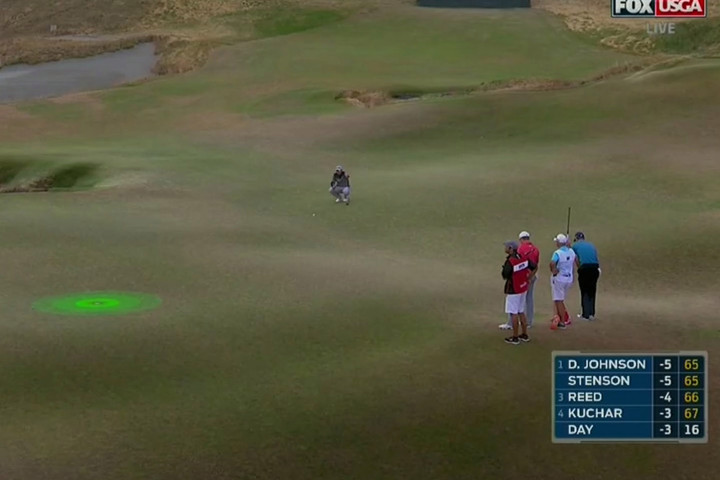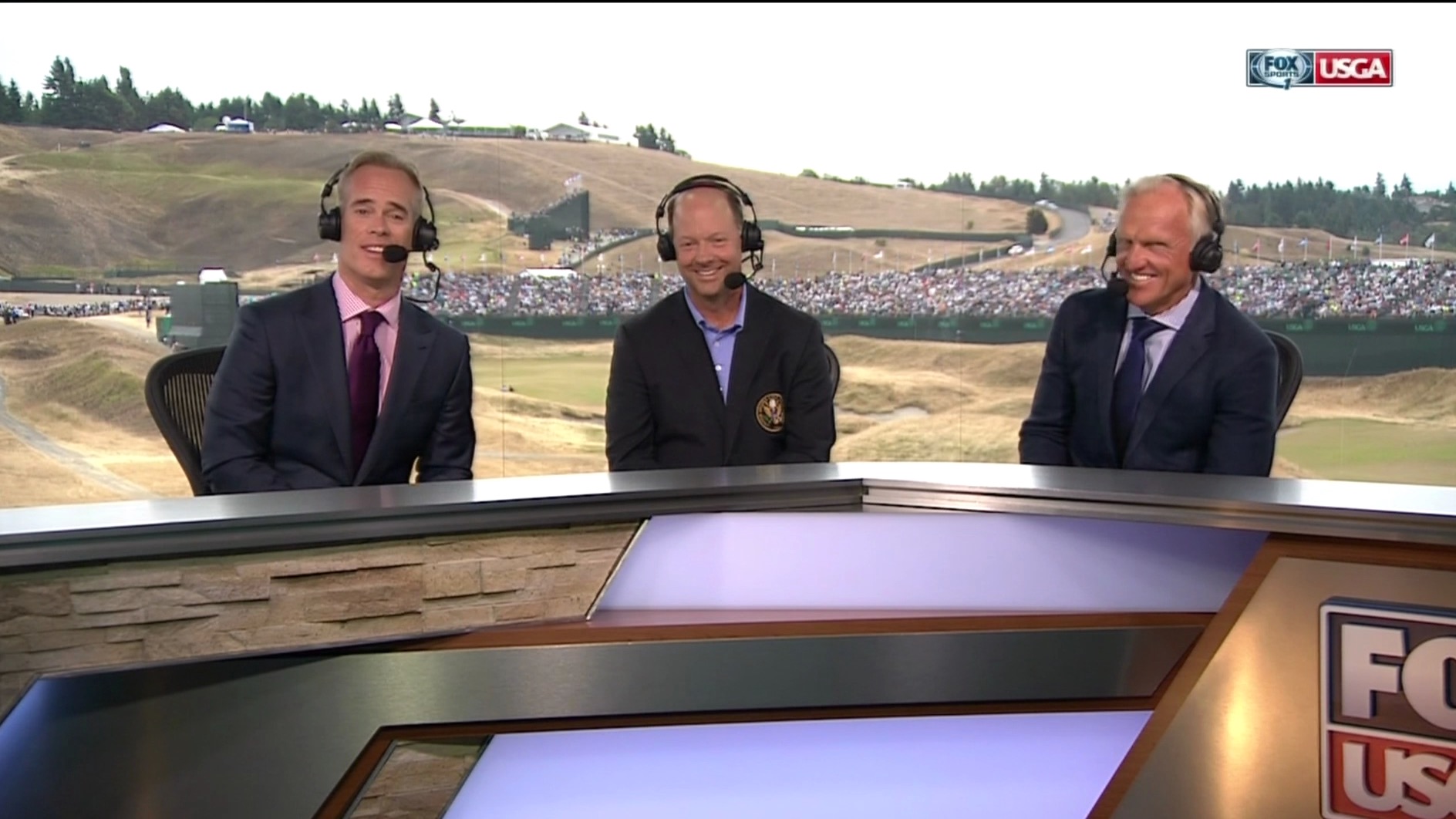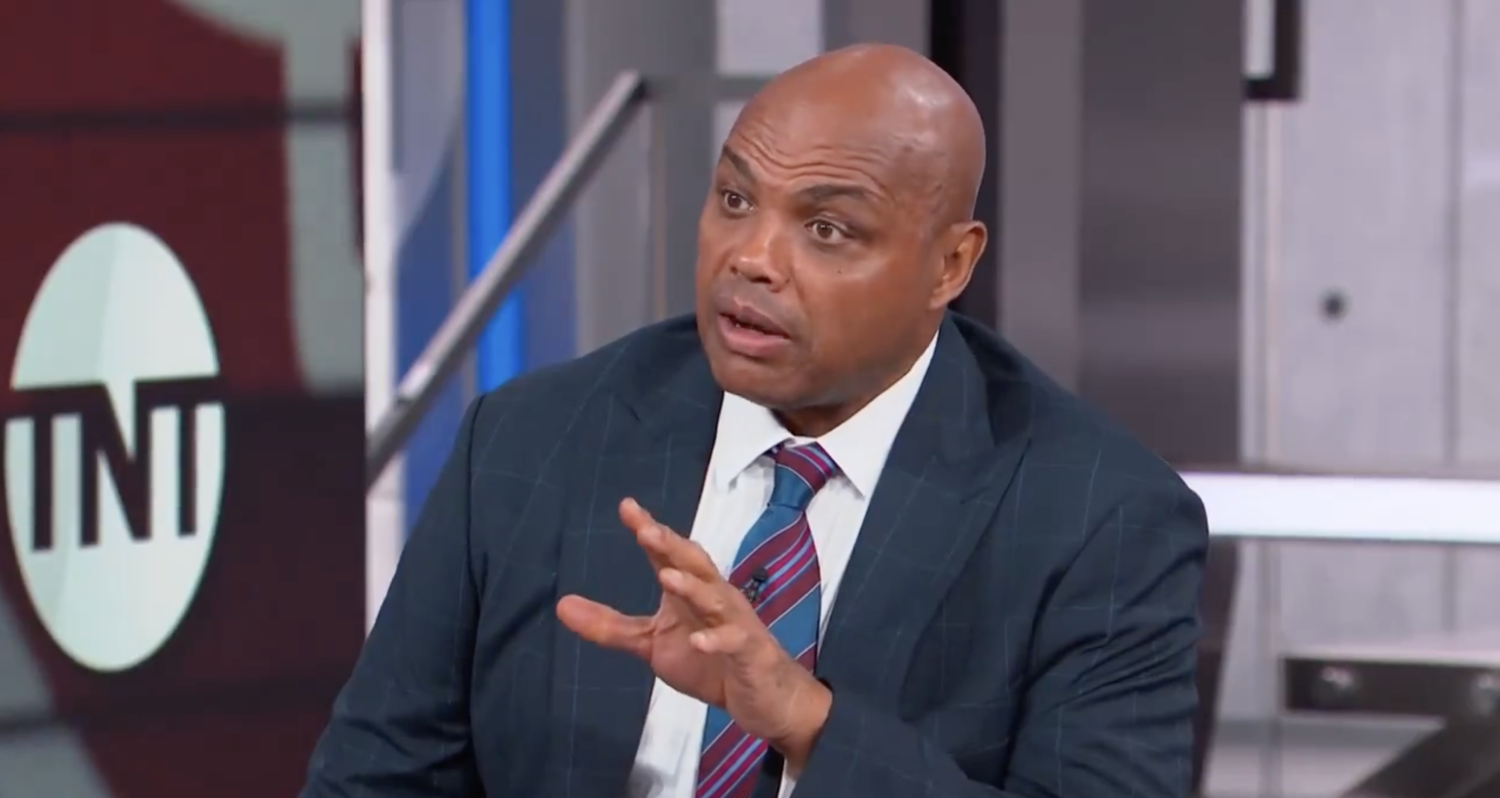The USGA did Fox no favors by making Chambers Bay one of the least enjoyable courses in U.S. Open history for the competitors to play, or the viewers—at home and on the course—to watch. The vistas, namely Puget Sound and the surrounding areas, are beautiful, but the yellow, brown and mustard pallet of the actual course played terribly on television.
In many ways, Fox did the USGA no favors too by coming off the tee on Thursday with so many problems it looked like the first time the network had ever televised a live sporting event.
In all, Fox and the USGA were on a path to make the 2015 U.S. Open one of the least memorable in history. Thankfully the golfers refused to let that happen, and despite all the issues in and around the broadcast, Fox had one of the most unforgettable finishes in golf history—in primetime—to kick off its long run with the USGA at the U.S. Open.
With the 2016 tournament at Oakmont, Fox will have a much easier time capturing the action than they did at the wispy and unwieldy Chambers Bay. Given a year of seasoning and some major tweaks to the telecast, Fox could go from piece of…work, to a work in progress, to something that actually works.
Here are nine suggestions—I thought 18 might take longer than a round at Chambers Bay to get through—for how Fox’s coverage can get up to par in time for 2016.
http://gty.im/1246846
Greg Norman, Failure Expert
Unlike most of you, I do not hate Joe Buck. I think Buck can be witty, intelligent and he’s always prepared for big moments, even when it’s a sport that he hasn’t had much professional experience working. Buck was not Fox’s problem, and may have been one of the brighter spots of the weekend for Fox, for anyone who was able to look beyond the poisoned past that made you hate him in the first place.
Randy Moss was not wiping his behind on the 18th flag at Chambers Bay. The St. Louis Cardinals starting nine are not made of dried out fine fescue and bumpy Poa annua.
Whatever preconceived disdain for Buck you have because he’s boring and pompous and hates your team, none of that was relevant at the U.S. Open. Was he as good as Jim Nantz or Dan Hicks? Probably not, no. But he was fine, and he’s always going to be fine. What Fox put around him needs work.
That starts with Greg Norman.
If there was one moment where a legitimate criticism toward Buck could be levied it was just after Dustin Johnson three-putt for par to lose the U.S. Open and Buck did not turn to Norman for his immediate thoughts at Johnson’s failure.
It was good of Buck to call Spieth the winner, not Johnson the loser, but immediately after reminding us who actually won the tournament, Fox HAD to go to Norman for an instant reaction into the mind of someone who failed so horribly in moments like that in the past.
There is no player in golf history more connected to major championship failure than the two-time winner of The Open Championship, who was sitting blond-locked and just as shocked as the rest of us without so much as a word into the mindset of a major loser.
How Fox didn’t just turn the entire show over to Norman, I will never know.
“Dustin Johnson just blew the U.S. Open. Shark, your thoughts on this horrific failure, as someone who knows a thing or two about that?”
Norman didn’t do much right for Fox this week. Buck had to spend five minutes coaxing any kind of criticism out of him on Tiger Woods when his first-round 80 was low-hanging fruit for television pundits. Nick Faldo would have skewered Woods. Johnny Miller would have come up with 63 ways to end his career. Norman seemed scared to give any opinion at all.
In all, Norman has the historical cache of a big star, and has the look Fox wants in a lead analyst, but he doesn’t have the bite you’d expect from someone called Shark. He has a year to figure it out, and Fox needs to use him in the right ways for him to shine.
https://vine.co/v/eixqZrQd3ZD/embed
Greg Norman, M.D.
When coming up with right ways to use Norman, that means DO NOT USE HIM IN THE ROLE OF DOCTOR.
Greg Norman was asked on two separate occasions on Saturday to explain vertigo. Why in the world Fox didn’t bring in a doctor to explain the condition Jason Day played with is beyond me, especially considering the USGA talked to a credentialed doctor on site about the situation and posted it online over the weekend!
Instead Fox went to Norman, TWICE, to bungle through an explanation of vertigo. I felt like I was dizzy just listening to him.
I get that Norman helped break the story using his connection to Day’s camp. That was good work by both him and by Fox on Friday evening. But by Saturday when Day was teeing off, Fox had ample time to recover and get an actual medical professional on the set. Instead, we got Shark, M.D. and it was horrific.
Hawkeye On The Greens
Let’s take a break from the Fox host and analysts for a brief second to talk about how Fox “Fox’d up” the U.S. Open with its Hawkeye technology package in an effort to better portray the slopes and undulations of the greens at Chambers Bay.
Note to Fox: this was your first major, but it wasn’t ours. The average golf fan probably can’t read a green, but putting darker patches to show the curves of the green without explaining how a putt would break was technology for the sake of technology.
There’s a reason all the other networks use the digitized “dropping balls” or “pointed arrow” methods: they actually show what you want them to show, far better than simple shading on a green. (Fox did this too, and it was all they should have done on the greens.)
The glowing hole was nearly as bad as Fox’s old glowing puck, and the whole greenside tech package felt like it was something different for the sake of being different. In no way was it better. In a year it can be.
If Fox uses the live video overlay to show a ball grid or break pattern on the green—and not just on a digital recreation—that would be really awesome use of technology and live footage. If done right, it’s exactly what Fox was hoping to accomplish this year.
Get Better Ball Tracking
Fox couldn’t even get the driving part of the course right for much of the week, so why are we worrying as much about the greens? Using the ball tracking was fine, although it felt like it was overused to the point of it being more like a video game than a live golf event. And yet, when Fox didn’t use the tracker on the drives, it seemed like the camera operators had no idea where the ball had gone.
Tracking a golf ball in the air is hard, especially in the type of sky they had off Puget Sound, but finding the ball once it lands is key to showing golf on television, and Fox failed miserably time and time again at that, cutting to wide shots of landing areas and hoping to find a stray ball in the shot.
If Fox is going to improve on this coverage next year, they need to either hire better camera operators for the fairways, or give those operators more reps at golf or the proper tools to find the ball quicker and more effectively.

Don’t “Fox Up” The Graphics
Fox really tried to make the graphics packages hip and cool and Nascary and it didn’t fit the presentation of a golf tournament at all. Fox needed to worry more about getting the particulars on the screen in a timely fashion instead, as Thursday and Friday were a disaster at telling viewers who was hitting, what his score was and how many strokes he had relative to par on the current hole.
As the tournament went along, Fox got better at updating their scoreboard and quickly getting the information for each shot on the screen. Still there were moments where one graphic bug hopped on top of another and other times where the five-man leaderboard wasn’t updating after shots we had just watched live.
The fairway width and elevation changes were handled well, as was the distance graphics on most shot and where the players should want to land the ball. Fox was prepared for the bells and whistles, they just didn’t work out the basics enough first, which made the superfluous stuff look kind of ridiculous.
http://gty.im/78952861
Tom Weiskopf, Brad Faxon and The Non-Shark Analysts
Let’s be positive first.
Corey Pavin did a nice job as an on course reporter. So, too, did Scott McCarron and Julie Inkster. Steve Flesch seemed indistinguishable between any other analyst, which is probably a good thing as to not stand out when part of an on-site crew and Brad Faxon ended the week as clearly Fox’s best live event analyst. If Faxon had even half the resume Norman has—that means one major, or even multiple top-five finishes in majors—he could be Fox’s lead golf analyst.
As good as Faxon was relative to the Fox field, he doesn’t have the cache even someone like even Pavin has, so there’s no chance Fox could get by with him in the lead chair.
Did you notice, though, that Faxon was on the desk during the post-round coverage, clearly there to buoy the analysis of Tom Weiskopf?
Weiskopf is a major champion and finished in the top three in every major at least once in his career. He is a noted course architect. He is a name most golf fans recognize. And he came off like a 72 year-old curmudgeon who has no interest being at a golf event, let alone providing a modicum of perspective on the tournament he was working.
The times Fox sent it to Curt Menefee and Weiskopf were some of the worst moments in live sports coverage I can remember.
I still have an old Tom Weiskopf putter I got when I was a kid in my bag. After this weekend, I can’t ever use that with confidence again.
http://gty.im/462482462
Curt Menefee’s Wheelhouse
The FIFA Women’s World Cup did Fox no favors, as Rob Stone was pulled up to Canada for hosting duties this month, taking him off the coverage of the U.S. Open he’d have been perfect for on set.
Menefee may know the game of golf—remember when Fox swore to us he knew soccer before he destroyed the pre-match coverage of the UEFA Champions League a few years back—but there is no chance Fox can sell us on Menefee’s role staying the same next year. He was sub-par, if you pardon the pun, and while the NFL is clearly his wheelhouse for Fox, he’s always come off as something of a teleprompter reader and not much else, while Terry Bradshaw and crew took over the Fox studio show in the fall.
Fox would have been better off with Bradshaw on the set at Chambers Bay. Frankly, Holly Sonders would have made more sense there. (More on her in a moment.)
This should fix itself next year with Stone presumably free for the U.S. Open. Menefee’s recaps were so bad even he knew it—he was obsessed with telling us what time it was on both coasts and how the East Coast people were just getting home from work and dinner while the West Coast fans had been watching all day—and it dragged everything else down, especially Weiskopf. Or vice versa. Or both.
https://www.youtube.com/watch?v=k-Jv8uWd-3k
Holly Sonders’ Giant TV
I want to end with Holly Sonders’ role for Fox, but first, what in the world was that set they gave her? Many tournaments have an outdoor area for post round interviews, giving us a natural feel that really works to the eye for golf. Some go with the “clubhouse” feel.
Chambers Bay certainly had to have some place outside the trailers or in a clubhouse that would have worked for those interviews. Instead, Fox crammed an immense television in the corner of a room and put Sonders on one side and the players on the other. It was awful, and contributed to the awkwardness of her interviews.
The rest was on her. Sometimes literally.
Holly Sonders Is Not Good At Asking Questions
Sonders made her name at the Golf Channel, so Fox assumed she knows a lot about golf. She does. She’s actually very good on television talking about golf. One of her canned pieces on the cross between style and golf on Rickie Fowler was a nice segment, and something Fox is great at doing.
Asking Jordan Spieth, who had just won the U.S. Open, if he had ever brought a fifth outfit in case there was a playoff when you had TWO questions with the guy is ridiculous.
Asking Kevin Kisner two questions about his playing partner Jason Day on Saturday and not even giving him so much as a cursory question about his own play or even a generic query about the way the course was set up for the players showed her lack of preparedness for the role. This from Friday may have been the best interview Sonders did all week and all of the credit should go to Spieth, who could act natural talking to a block of wood.
Charles Davis, who spelled Sonders in the early rounds, was far more prepared to actually interact with the players in a way that was beneficial to the audience.
The interview above with Sergio Garcia illustrated several reasons why Sonders was the wrong choice for that gig. She joked awkwardly about her enormous video board, suggesting she should interview Sergio’s head shot instead of him, then pulled the “we were talking before the interview” line she used almost a dozen times over the weekend to set up a question about the course.
There’s no reason to tell the audience you had already asked the same question when we hadn’t heard the answer. If anything, putting that in the conversation stifles the subject’s response, essentially reiterating what he had previously said off the air instead of answering the question fresh.
Again, I’m not denying that Sonders adds value to a telecast in a way that Weiskopf clearly never will, but her value would have been sitting at the hourly update desk going over highlights or walking around the course doing human interest stories to break up the play on the course.
@theraggededge well then why is she interviewing people!
— Dan Levy (@DanLevyThinks) June 21, 2015
Were you sick of the “Bababooey” guys as much as I was? Where was Holly Sonders to interview them? That would have been amazing to see, and it would have used her in a much better role, freeing up the post-match interview spot for someone better suited for that situation.
In all, Fox seemed to learn on the job at the U.S. Open and got better as the tournament went along. A lot of work is needed to get as good as the other networks, but with these nine changes (and probably 63 more), Fox might get this right next year.


![EyeTVSnapshot[76]](https://cdn1.thecomeback.com/wp-content/uploads/sites/94/2015/06/EyeTVSnapshot76-1024x576.jpg)
![EyeTVSnapshot[74]](https://cdn1.thecomeback.com/wp-content/uploads/sites/94/2015/06/EyeTVSnapshot74-1024x576.jpg)





Comments are closed.